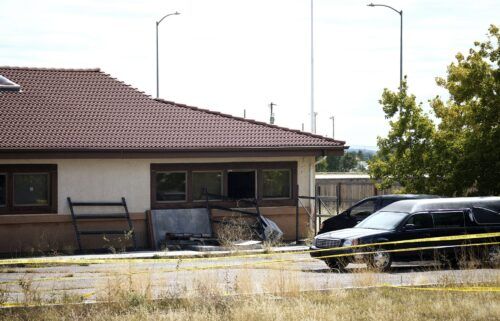Eurozone Fast Facts

Here’s a look at the eurozone. Nineteen countries in the European Union use the euro as their currency, and comprise the eurozone.
Facts
The countries in the eurozone as of 2020 are: Austria , Belgium, Cyprus, Estonia, Finland, France, Germany, Greece, Ireland, Italy, Latvia, Lithuania, Luxembourg, Malta, The Netherlands, Portugal, Slovakia, Slovenia and Spain.
January 1, 1999 – The euro is introduced.
The European Union’s Maastricht Treaty “convergence criteria,” or requirements for a member country to use the euro as currency:
– Annual budget deficits must not exceed 3% of gross domestic product.
– Public debt must be under 60% of gross domestic product.
– The country must have exchange rate stability.
– Inflation rates must be within 1.5% of the three EU countries with the lowest rate.
– Long-term interest rates must be within 2% of the three lowest interest rates in the EU.
Denmark doesn’t use the euro, and is not required to be a part of the eurozone.
Sweden does not belong to the eurozone but must join in the future, according to the terms of the treaty.
Bulgaria, Czech Republic, Hungary, Poland, Croatia and Romania belong to the EU, but do not currently meet the criteria for joining the eurozone.
Timeline
February 1992 – The Maastricht Treaty (officially – The Treaty on European Union) is signed by the 12 member countries of the European Community. It includes provisions for an Economic and Monetary Union (EMU).
May 1998 – It is confirmed that Austria, Belgium, Finland, France, Germany, Ireland, Italy, Luxembourg, the Netherlands, Portugal, and Spain fulfill the necessary conditions to adopt the euro.
June 1998 – The European Central Bank is established in Frankfurt, Germany, to manage the new common currency.
January 1, 1999 – The euro is launched, in non-physical form. It can be traded electronically and used in travelers’ checks.
September 2000 – Denmark rejects the adoption of the euro in a referendum.
January 2001 – Greece joins the eurozone after initially being rejected.
January 1, 2002 – Currency notes and coins are introduced in eurozone countries.
February 2002 – The euro becomes the sole currency of eurozone member countries.
2007 – Slovenia becomes the first former Communist country to use the euro.
2008 – Malta and Greek-controlled Cyprus join the eurozone.
2009 – Slovakia joins the eurozone.
2011 – Estonia joins the eurozone.
August 12, 2011 – The European Securities and Markets Authority imposes a ban on short selling stocks in France, Italy, Spain and Belgium in response to extreme stock market volatility.
September 15, 2011 – The European Central Bank, the Federal Reserve, the Bank of England, the Bank of Japan and the Swiss National Bank announce a coordinated plan to pump dollars into Europe’s financial system in an effort to boost liquidity across the eurozone. The banks will hold three auctions for US dollars, with a three-month maturity, through the end of the year with the goal of providing US dollars to struggling European banks that need the currency to fund loans and repay debt.
November 30, 2011 – The US Federal Reserve along with central banks of the eurozone, England, Japan, Switzerland and Canada, announce a coordinated plan to lower prices on dollar liquidity swaps beginning on December 5, and extending these swap arrangements to February 1, 2013.
December 9, 2011 – A majority of European leaders agree on a new deal to try to resolve the continent’s debt crisis, but Britain refuses to back a broader treaty change. The agreement includes: handing over the running of the EU’s bailout funds to the European Central Bank and adding 200 billion euros to the resources of the International Monetary Fund.
June 29, 2012 – European leaders reach a deal to create a single supervisory body to oversee the eurozone’s banks which could use the single currency area’s rescue funds, the European Financial Stability Facility or European Stability Mechanism, to aid banks directly without adding to governments’ debt.
September 12, 2012 – The German Constitutional Court rules against a group of conservative politicians who requested an injunction that would bar Germany from ratifying the treaty governing the European Stability Mechanism.
November 15, 2012 – The eurozone officially slips into recession. It’s the second recession since 2009, making it a double dip.
December 13, 2012 – The European Union reaches a banking supervision agreement with the European Central Bank.
January 1, 2014 – Latvia joins the eurozone as the 18th member country.
January 1, 2015 – Lithuania joins the eurozone as the 19th member country.
January 7, 2015 – Eurostat releases a report showing that for the first time since the crisis of 2009 the eurozone fell into deflation in December 2014.
January 22, 2015 – European Central Bank President Mario Draghi announces a new stimulus program involving the purchase of bonds known as “quantitative easing,” meant to boost economies in the eurozone.
December 8, 2016 – The European Central Bank says it will continue its asset-buying program, or quantitative easing, until the end of December 2017, “or beyond, if necessary.”
January 17, 2017 – Otmar Issing, the European Central Bank’s first chief economist, writes in an article for CNN that the euro “can muddle through for some time to come. But it cannot survive indefinitely” unless fundamental problems are addressed, citing unemployment, debt and slow growth.
November 23, 2017 – Bloomberg News reports that the Euro area is on track for its best economic performance since the financial crisis, with the fastest increase in hiring in 17 years.
December 6, 2017 – The European Commission releases a package of proposals aimed at deepening Europe’s economic and monetary union as a protection against future financial crises. “The overall aim is to enhance the unity, efficiency and democratic accountability of Europe’s Economic and Monetary Union by 2025,” the Commission said in a statement.
June 14, 2018 – The European Central Bank announces it will halt its bond purchase program at the end of December. At that point, it will have created almost 2.7 trillion euros ($3.1 trillion) in new money for the program over three years. The end of money printing means the central bank thinks the economy no longer needs emergency support.


